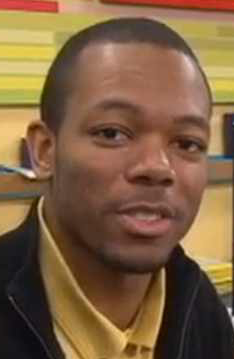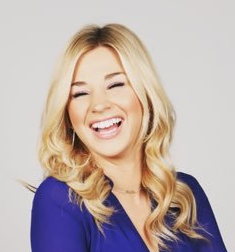From Jim Metrock: It appears that Channel One will once again avoid going out of business. I was hoping for an announcement (on May 4) that the infamous “kiddie marketing” firm would cease operations, but I understand now that probably won’t happen. Rats! Channel One News will continue to limp on and pursue its main mission of getting advertising in front of a captive audience of schoolchildren.
On April 19, Houghton Mifflin, Channel One’s parent company, said it plans to terminate between 360 and 450 employees. http://www.bizjournals.com/boston/news/2017/04/19/houghton-mifflin-plans-tocut-hundreds-of-employees.html
It would be hard to imagine that Channel One won’t be affected by this large downsizing. Are there 360 Houghton Mifflin employees who are more expendable than the gang at Channel One? How much revenue does each Channel One employee contribute to Houghton Mifflin’s bottom line? It can’t be much.
Since 2012, when Channel One quietly transferred title of all their TV network equipment (TV sets, satellite dish, etc.) to schools, they lost the ability to force schools to watch their TV show. https://obligation.org/2015-09-03-the-letter-that-ended-chris-whittles-educational-nightmare-channel-one-news In the 1990s schools experimented with Channel One because they wanted the use of the TV network with no cash outlay. They showed the commercial-filled Channel One News TV show because that was the price of keeping the TV sets. Schools don’t have to pay that price anymore, and that’s why Channel One’s audience has plunged.
I doubt if more than two or three of the current on-air personalities at Channel One come back in the fall. Some will no doubt be told to leave, but more than likely the smarter ones will see the handwriting on the wall and find other employment before they receive a pink slip.
Here are the remaining Channel One News on-air personalities:
This is Arielle Hixson. She has been at Channel One since January 2015. She studied journalism at Georgetown. She is too qualified for Channel One. What in the world is she doing here? She should walk out the door now.
____________________________________________________________________________________________
Muscle Man Keith Kocinski (he likes shirts that don’t cover his biceps) is starting his fifth year at Channel One. He badly needs an agent (or a better agent) or his chances for a legitimate broadcasting career will be over. https://obligation.org/2013-09-21-keith-kocinski
____________________________________________________________________________________________

Demetrius Pipkin also has been at this kiddie marketing firm for five years. If one stays at Channel One for that length of time, it usually indicates a lack of ambition. Because he is both a producer and an on-air personality, his job is probably secure.
____________________________________________________________________________________________
Emily Reppert works two jobs. She works for the New York Mets and she occasionally reads a teleprompter at Channel One. She has only been at Channel One since December 2016, so she is most likely the first to disappear in the downsizing.
____________________________________________________________________________________________
 Tom Hanson is a man whose career appears to in reverse. After graduation from Arizona State in 2012, he landed a job as an associate producer at CNN. Way to go, Tom. Then after only nine months, he was no longer at CNN. Don’t know what happened, but a month after leaving CNN he gets a job at … C1N. Who would leave CNN for Channel One? The answer is no one would do that unless they had to. I’m guessing Mr. Hanson will stay on and be at Channel One when the company finally goes under.
Tom Hanson is a man whose career appears to in reverse. After graduation from Arizona State in 2012, he landed a job as an associate producer at CNN. Way to go, Tom. Then after only nine months, he was no longer at CNN. Don’t know what happened, but a month after leaving CNN he gets a job at … C1N. Who would leave CNN for Channel One? The answer is no one would do that unless they had to. I’m guessing Mr. Hanson will stay on and be at Channel One when the company finally goes under.
____________________________________________________________________________________________
 Cassie Hudson is a more behind-the-scenes person at Channel One than an on-air personality, but she is appearing more and more in front of the camera. Although she has appeared very uncomfortable at times, if she survives, and others jump ship, she may be the last one standing, and therefore, may become the new face of a much smaller Channel One News.
Cassie Hudson is a more behind-the-scenes person at Channel One than an on-air personality, but she is appearing more and more in front of the camera. Although she has appeared very uncomfortable at times, if she survives, and others jump ship, she may be the last one standing, and therefore, may become the new face of a much smaller Channel One News.
____________________________________________________________________________________________
Azia Celestino is also hedging her bet on Channel One. She has a side job with a company called Complex Hustle. It’s odd that Ms. Celestino is a self proclaimed “proud ambassador of diversity” yet she has had no problem working for the repugnant Channel One. Anyone who has studied Channel One’s negative impact on schoolchildren, knows that children in lower income communities are hurt the worst. [Robbing a suburban student, in a well-funded school, of an hour a week of school time is bad, but robbing that same time from a student struggling in a school with few resources is almost criminal. Remember, all of these on-air personalities earn their salaries from students sacrificing 12 minutes a day, 1 hour a week, 1 academic week of school time EACH YEAR to watch Channel One’s commercials. What a disgusting way for a young person to make money.]
Check this out, Ms. Diversity and Ms.Hixson and Mr. Pipkin:
Dr. Michael Morgan, University of Massachusetts Amherst
(1) Channel One is most often found in low income area schools, where it is often used instead of traditional educational materials when resources are scarcest;
(2) schools that can afford to spend more on their students are much less likely to utilize Channel One;
(3) Channel One is more often shown to the students who are least able to afford to buy all the products advertised, thus increasing a sense of alienation and frustration; and
(4) increasing commercialization of the culture and the schools suggests a shutting out of other voices and interests of the educational system.
The study suggests that the use of Channel One in low-income, socioeconomically deprived schools presents an illusion of providing more and better educational facilities which only contributes to widening the societal gap.
____________________________________________________________________________________________
Good luck to all these young people. In this group, there will be winners and losers in the next few weeks. The ones who resign or who are fired will be the winners.






